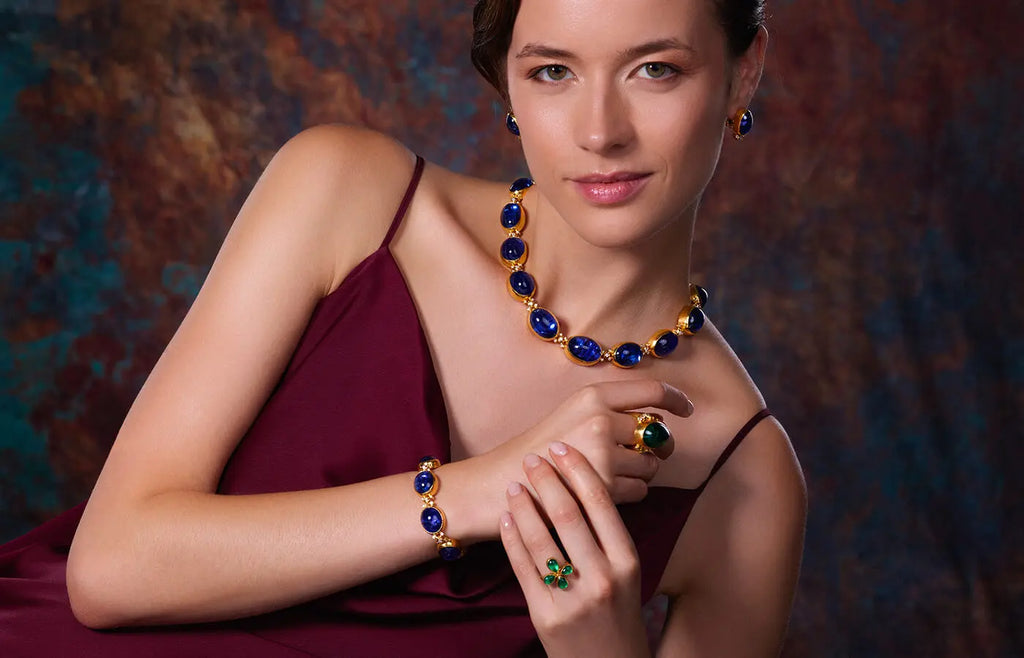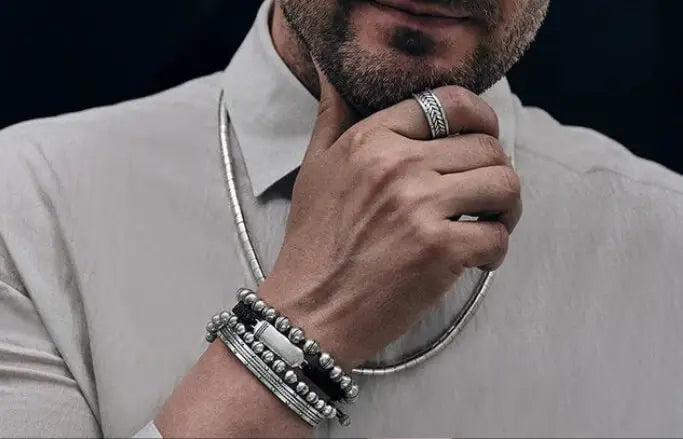Being Mindful about Jewelry in our World’s Future Towards a More Sustainable Jewelry Making Landscape
Sustainable jewelry brands under the spotlight

In 2018 Vogue magazine described sustainable jewelry making as the new frontier for the jewelry industry. Increasingly consumers are demanding higher standards from the brands they purchase and jewelry is no exception. For an industry which is all about the positive feelings and emotions associated with its products, the jewelry world has been under scrutiny for a host of practices which entail abuses of ethics and standards related to everything from the environment to child labor to wars. Few can forget the gruesome scenes from Blood Diamond, the 2006 film in which Leonardo Di Caprio exposed the corruption in the mining and trade of diamonds.
What does sustainable jewelry making entail?
To you the consumer, sustainability means being consciously aware of each purchase you make and taking the time to know how a piece of jewelry is made and supporting brands which observe and respect proper practices and ethical standards. Today younger generations are increasingly likely to act on their beliefs when it comes to what they buy and older generations are also catching on. According to research even back in 2014 by Ipsos Mori, over 80% of consumers said that a retailer’s ethical standards mattered to them and more than a third said they would be willing to pay more for products with higher ethical standards.
This means that designers and manufacturers, need to be sourcing materials and making production in a manner that has the minimum possible damaging impact on our environment and the communities involved in its production. At a minimum, they should:
- have an ethics/sustainability policy
- observe the Kimberly Process protocol
- practice recycling and repurposing
- be aware of where their stones and metals originate from
How can making jewelry be harmful?
What makes jewelry making harmful to the environment and to people? It seems hard to believe that something so small and beautiful can do such damage.
Mining Metals and Minerals
Manufacturing Processes
Cutting Gems
Sustainable jewelry making has its challenges
A fundamental component of ethical production is supply chain transparency. In the jewelry industry, supply chains are long and complex, causing the shift to sustainability jewelry making extremely challenging.
Because most metals and minerals come out of the ground, often in the poorest regions on earth or war zones, and pass through multiple hands on their way to market, traceability has been difficult to unravel and accountability almost impossible to impose. Jewelry supply chains cross continents and involve thousands of steps and participants; mineral and metal mining often happens in remote areas in extremely informal settings; a multitude of languages and cultures complicate business practices and relationships; and it is an industry that is very traditional and has been slow to change in many regards.
The idea of operating responsibility challenges long-held practices and requires a level of control, involvement and transparency that most industry players have been unwilling to embrace in the past. But as disruptive to the industry as it is, the need for sustainable jewelry brands is the new reality and the industry must change.
Measures already in place to enhance the availability of sustainable jewelry
Organizations

Several organizations are already promoting and supporting the move towards a higher level of ethical and environmental accountability in the jewelry industry. Groups like Ethical MetalsmithsTerraCycle, Fair Jewelry Action, and Ethical Metalsmiths; conferences like the Chicago Responsible Jewelry Conference; and standards organizations like the Responsible Jewellery Council, are all dedicated to providing education, resources, and support to sustainable jewelry brands and industry producers who want to improve their social and environmental impact. The industry has already taken the important step of certifying sustainable gold jewelry that meets international sustainability standards.
In its first “Jewelry Industry Summit” in 2016, jewelers agreed to many of the same goals that other industries seek when it comes to sustainability and ethical sourcing. For instance, they sought:
- To procure materials in a way that protects the environment
- To ensure its activities help promote the growth and well-being of local communities where materials are sourced and traded
- To promote supply chain transparency
- To adhere to standards that protect human rights and prevent modern-day slavery
Regulatory Support
Technology

The jewelry sustainability commitment at GURHAN
At GURHAN we understand and recognize that all that we do has an impact on the planet and we are determined and committed to working towards eco friendly sustainable jewelry. At GURHAN we are constantly endeavoring to ensure that our ethical jewelry and sustainability standards are forefront in our decision-making process. At GURHAN, we aim to be as transparent as possible when it comes to the origins of our products and we endeavor to ensure that our materials are responsibly sourced. One of our goals is to create sustainable jewelry supply chains, including the sourcing of gold, emeralds, opals, coral and more. In response to the Rohingya crisis in Burma, we do not sources stones from Myanmar. Additionally, we only use existing vintage coral supplies and have ceased all purchases of newly farmed coral. We aim to reduce the environmental impact of our own workshops through the effective management of energy usage, chemicals, air quality, waste materials and packaging, we continue to demonstrate our commitment to tackling climate change and making sure that all materials are manufactured in a responsible manner.
Specifically, we are committed to:
- Follow the Kimberly Process protocol
- Work with non-conflict stones
- Be prudent about the materials we source
- Handmake our production
- Use artisanal methods that are non-toxic and with low energy requirements
- Use recycled metals as much as possible
- Reuse aged or dead stock
- Upcycle materials
- Recycle metal scrap, paper scrap, packaging and shipping materials,
- Use proper chemical disposal procedures and energy-efficient practices in their studios and workshops
- Using eco-friendly sources
- Use recycled, recyclable packaging
- Observe sustainable office and workshop practices
What more can we all do?
To achieve true sustainability in the jewelry world, a level of activism and sourcing of sustainable jewelry supplies is required, that most jewelry producers can’t immediately achieve or afford. Even if they refer to themselves as ethical, or responsible jewelers, even if their hearts are in the right place, they are rarely sustainable jewelry designers. But if they are making conscious decisions to improve, to try and raise the bar every day on their sustainable jewelry making practices, constantly seeking new sources and new methods to improve the lives of others while protecting the planet, it is a step in the right direction. It isn’t easy, but more and more sustainable jewelry companies are doing the work of creating ethical, responsible and eco friendly sustainable jewelry. And if consumers continue to ask for it, responsible jewelry options will continue to grow and grow.





